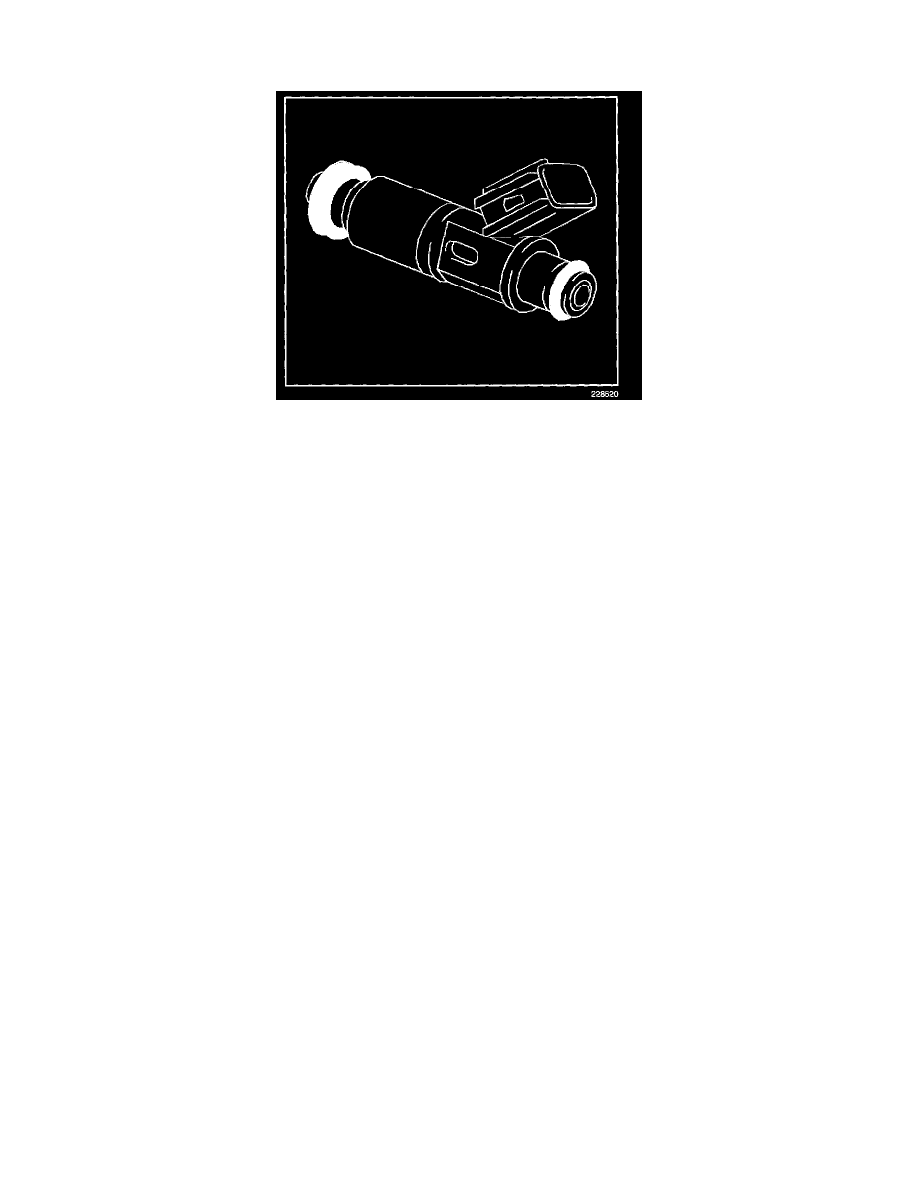Vibe FWD L4-1.8L VIN 8 (2004)

Fuel Injector: Description and Operation
FUEL INJECTOR
The fuel injector is an electromagnetic (solenoid) type injection nozzle which injects fuel into the intake port of the cylinder head according to the
signals from the powertrain control module (PCM). There are 4 fuel injectors, one for each cylinder, located between the intake manifold and the fuel
rail.
The PCM energizes the solenoid coil of the fuel injector, generating an electromagnet field that attracts the solenoid plunger. The needle valve, which
is incorporated with the solenoid plunger, is opened by the movement of the solenoid plunger. The opening of the needle valve allows fuel that is
under pressure to disperse thru a four hole plate into a cone shaped pattern. Because the stroke of the needle valve in the fuel injector is set constant,
the amount of fuel injected at one time is determined by the pulse width injection time-the length of time the solenoid coil is energized.
FUEL INJECTION OPERATION
The PCM controls the amount of fuel the fuel injector supplies to each cylinder by controlling the ON time, or length of pulse, of each individual
injector. The delivery timing of the fuel into the cylinder head intake port by the fuel injector is controlled by the PCM. The timing and pulse of the
fuel injectors is carefully calculated with inputs from the various sensors so that a suitable air/fuel mixture is supplied to the engine for every driving
condition.
There are two types of injection timing. One is synchronous injection, when fuel injection is synchronous with the ignition signal or the signal from the
camshaft position (CMP) sensor. The other is asynchronous injection, when fuel injection takes place independently of the ignition signal or the signal
from the CMP sensor.
The PCM first calculates the correct timing of the fuel injectors by factoring the engine speed and the air volume together. Then the PCM applies
certain compensations that are based on the information provided by various sensors which detect the state of the engine and the current driving
conditions.
Synchronous Injection
When starting the engine, the fuel injectors inject the fuel simultaneously and synchronously at every camshaft Position (CMP) sensor signal. When
the engine is starting at a cold state, the amount of fuel is determined by the engine coolant temperature (ECT) sensor and is divided and injected.
Once the engine is running, the fuel injection occurs in a cylinder only when the cylinder is in the exhaust stroke. The PCM detects the compression
stroke of cylinder 1 through the CMP sensor signal.
Asynchronous Injection
Whenever a change in the throttle valve opening exceeds a specified value, as determined by the PCM, additional fuel is injected simultaneously into
the cylinders which are in the intake and exhaust strokes. This is in addition to the above synchronous injection and is not based on the ignition signal.
